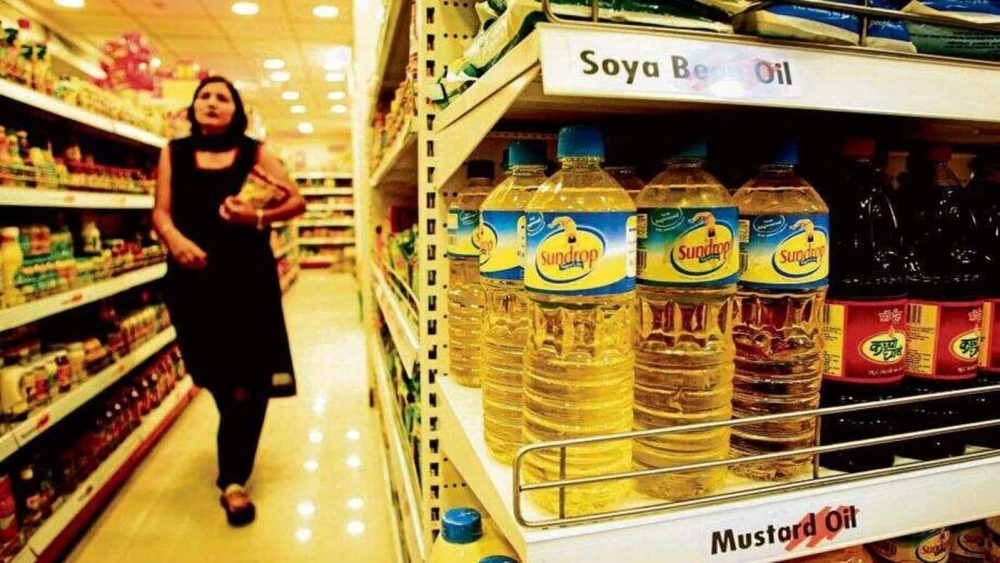The shock of cooking oil prices makes the global market bewildered
That is the story not only of fuel oil, but also of food oils, in particular sunflower and palm oil. Price of cooking oil has been increasing for many years. Crop harvests in some parts of the world are erratic, which causes cyclical shortages. For example, crops in Canada and Argentina were dry last year.
Meanwhile, increased investment in biofuel operations – such as renewable diesel projects in China and biodiesel plants in Southeast Asia – has boosted demand for oil. So the price of sunflower oil and palm oil went up. But recently these two items have become unbelievably expensive for only two reasons.

In the case of sunflower oil, it is due to a sharp drop in supply due to the conflict in Ukraine. Russia and Ukraine together accounted for 75% of sunflower oil production before the conflict began, with Ukraine being the world’s largest exporter.
With the harvest in Ukraine stalled and sanctions targeting Russian companies, production and exports have declined: exports from Ukraine have fallen by 95% since the conflict and, if it continues, Ukrainian farmers risk missing the harvest and planting season.
Shortage situation sunflower oil has had a particularly severe impact on some Western countries. Sunflower oil is one of the most popular cooking oils in Germany and the UK, both of whom love deep-frying and appreciate sunflower oil for its relatively low price. Shortages have created a shortage of sunflower oil in both countries, with grocers splitting sales after shelves were cleared of supplies and some restaurants in Germany removed french fries from the menu.
The factors behind the recent rise in the price of palm oil are not so clear. Indonesia is by far the world’s largest producer of palm oil, generating about 60% and exporting about 53% of the world’s supply. The country is not experiencing chronic shortages: palm oil production has remained stable and is expected to grow 2.6% next year. However, the price of palm oil in Indonesia mysteriously increased in the last quarter of last year, from about 1 USD/liter in October to about 1.5 USD/liter in March.
And inflation has recently begun to spill over into global markets. That spillover is happening because the price of palm oil is a strong influence on domestic politics in Indonesia. Palm oil is a staple ingredient there, and is used by every family for cooking. Of course, a 50% price increase is a politically dangerous situation, and President Joko Widodo recently embarked on action to stabilize prices. First, he created a strategic reserve of 11 million liters of oil.
As prices continued to rise, he rolled out subsidies. This is followed by an export limit, then a quota, and finally a price ceiling for the domestic market. Palm oil disappeared from store shelves as people started hoarding. The government stepped up pressure on manufacturers and raised taxes on exports. Palm oil reappeared on the market, but at nearly double the price of November. So, at the end of April, Indonesia implemented a plan to ban the export of a wide range of palm oil products.
Global markets panic. Palm oil It is the most used cooking oil in the world, and the prospect of 50% of global supply disappearing overnight spooked commodity markets.
Prices increased by 6%, and the prices of other cooking oils also increased. Soybean oil, the second most used oil, rose 4.5 percent. The real ban would be almost complete, covering crude palm oil and even used cooking oil. Why did the price go up so sharply in the first place. If Indonesia doesn’t have a palm oil production problem, what will happen to the supply?
Indonesia has opened an investigation into the palm oil production business. The investigation found evidence of cartels working with manufacturers, distributors, business associations, government officials and retailers to limit supply to the retail market and fixed price.
However, one of the biggest problems is the government of this country, in 2005, when the world started to pay attention to the idea of biofuels, Indonesia saw an opportunity. The country has built many biodiesel production plants, built strong relationships with buyers and stimulated the market with subsidies.
That has encouraged palm oil producers to direct an increasing amount of oil away from the domestic market, thereby increasing prices for Indonesians. To reverse the direction of that flow, the Indonesian government would need to cancel or at least freeze the subsidies.
But it’s not just Indonesians who are worried about rising palm oil prices. Commodities are used in a wide variety of goods, from cosmetics and soaps to packaged chocolate and bread. Perhaps most importantly, however, it is used around the world as a cooking oil, especially in poorer countries.
When the shortage of cooking oil persists, the price of palm oil will increase. Richer nations could make up for it: Britons could, for example, switch to canola oil to fry fish and chips. But the poorest countries won’t have that luxury. Palm oil is already the cheapest cooking oil on the market, which means the poorest will be caught in a cycle of food inflation that has seen food prices rise by more than 30% in 2021.
The World Bank predicts that prices will continue to rise; more than 20% next year. The results can be dire. Many poorer countries have been and are feeling the squeeze, financially and politically, as governments pile up in debt, and protest against the effects of inflation. After all, it’s just cooking oil. But rising food costs and social unrest could result.
at Blogtuan.info – Source: danviet.vn – Read the original article here



